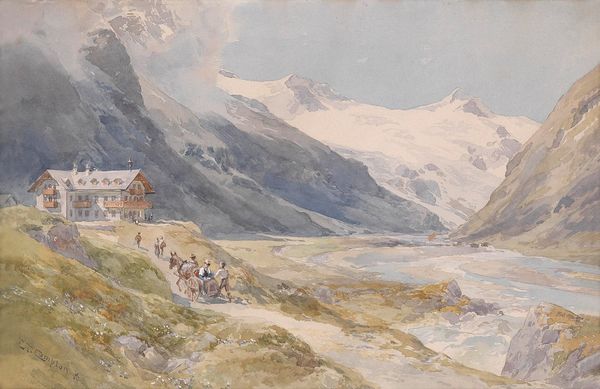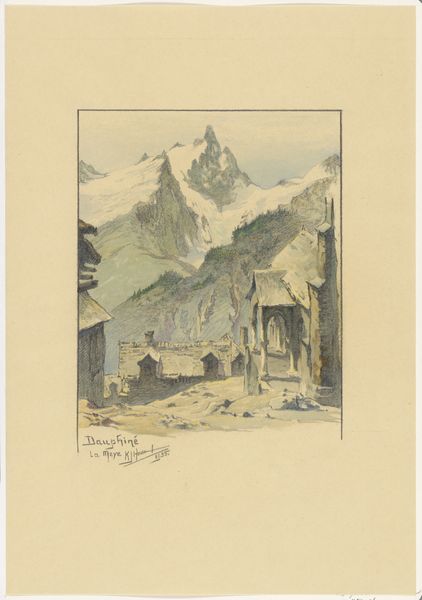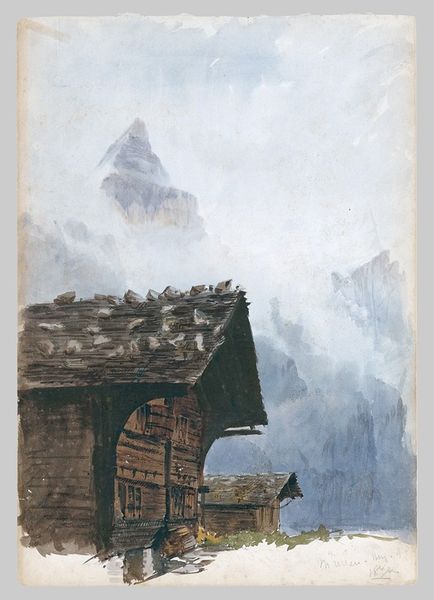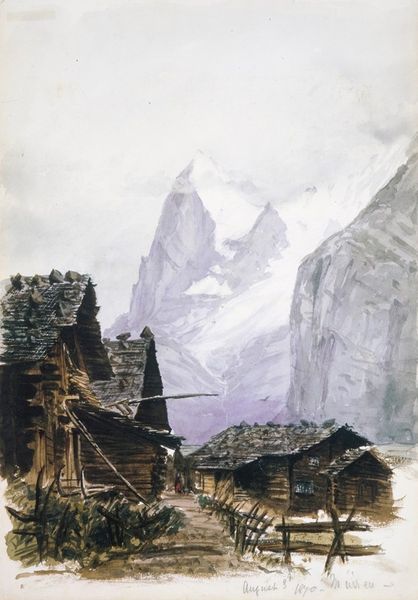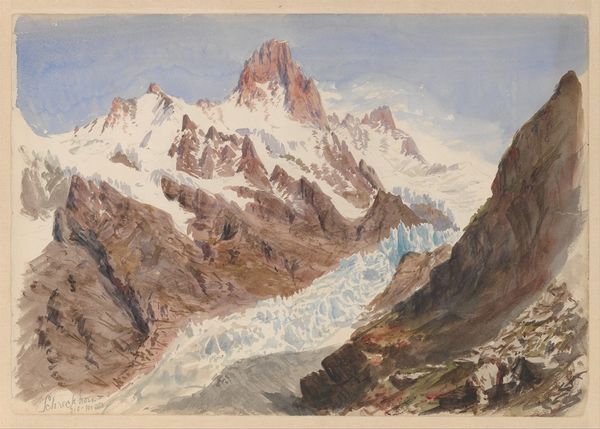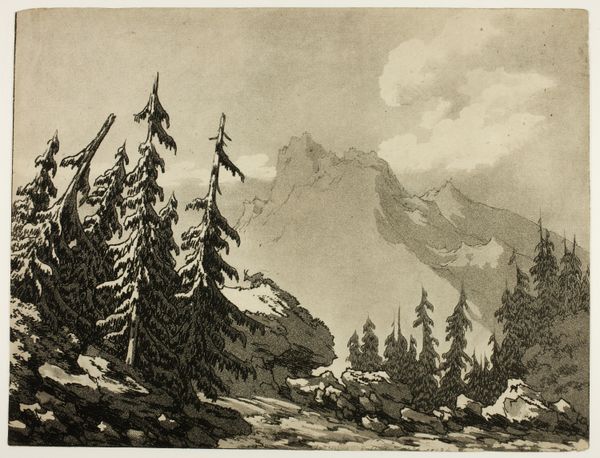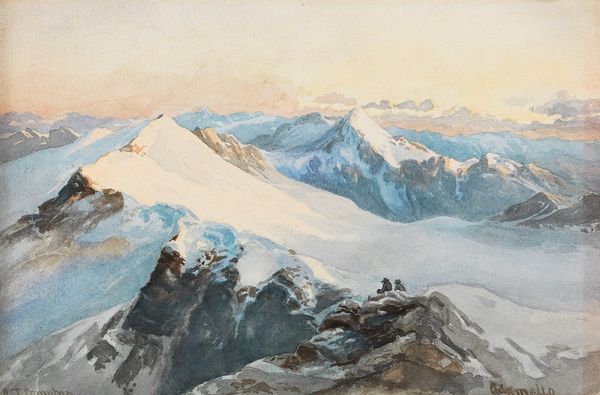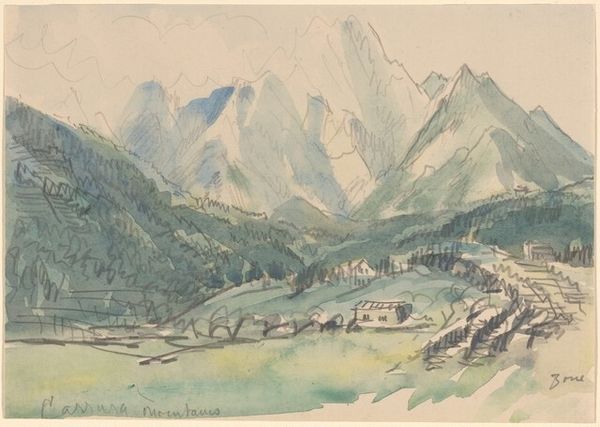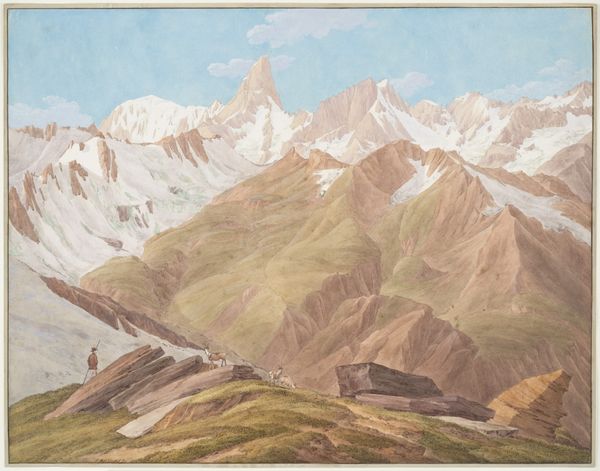
Copyright: Public Domain: Artvee
Curator: At first glance, it evokes a certain quietude, a stark yet delicate balance between human presence and overwhelming nature. Editor: Indeed. What we are looking at is John Singer Sargent's "Chalets, Breithorn, Mürren," completed around 1870. This piece showcases Sargent's aptitude for watercolor and mixed media in plein-air painting, capturing a landscape deeply entrenched in the Romantic tradition. Curator: I’m drawn to the way the geometry of the chalets plays against the fluid, almost ethereal rendering of the mountains. Notice how Sargent uses the darker tones of the wood to ground the composition, preventing the vast landscape from overwhelming the viewer. Semiotically speaking, these houses serve as signifiers of human agency and domesticity within an otherwise untamed environment. Editor: The choice of location speaks volumes about the social and artistic milieu of the time. Mürren, in the Swiss Alps, became a popular destination for the European elite during the 19th century. This painting can be read as part of a broader cultural fascination with sublime landscapes, fueled by Romantic ideals of nature as both awe-inspiring and potentially destructive. Sargent caters to a bourgeois public keen on owning images of exotic landscapes, perpetuating a market around the picturesque. Curator: I see your point about its reception, but let us not discount the sophisticated layering and wash techniques employed here. The tonal variations achieved with watercolor are quite advanced for such an early work, indicative of Sargent’s rapidly developing formal skills. He articulates volume and atmospheric perspective with extraordinary efficiency. Editor: True, but these aesthetic choices were always interwoven with social positioning. Landscape painting, especially depictions of the Alps, had strong nationalistic and imperialistic undercurrents. The art market shaped both what artists created and how the public interpreted those creations. Sargent's imagery of leisure and majestic wilderness was, and remains, complicit within these larger historical dynamics. Curator: I grant you that these pieces are invariably shaped by history, even inadvertently, but the inherent properties cannot be so easily discarded. Regardless of history or prevailing winds, a certain effect has to be achieved for the picture to come alive, something he does deftly here. Editor: A fair point; considering those multiple lenses ultimately enrich our experience, I think.
Comments
No comments
Be the first to comment and join the conversation on the ultimate creative platform.

